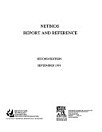Bridge Technology Report
Architecture Technology Architecture Technology Corpor
অক্টো ২০১৩ · Elsevier
ই-বুক
176
পৃষ্ঠা
family_home
উপযুক্ত
info
reportরেটিং ও রিভিউ যাচাই করা হয়নি আরও জানুন
এই ই-বুকের বিষয়ে
Please note this is a Short Discount publication. As LANs have proliferated, new technologies and system concepts have come to the fore. One of the key issues is how to interconnect networks. One means of interconnection is to use a 'bridge'. Other competing technologies are repeaters, routers, and gateways. Bridges permit traffic isolation, connect network segments together and operate at the MAC layer. Further, because they operate at the MAC layer, they can handle a variety of protocols such as TCP/IP, SNA, and X.25. This report focuses on the specific technology of bridging two networks and the competing approaches of spanning tree [backed by DEC] and the source route technology [backed by IBM]. Both of these approaches are compared and their strengths and weaknesses described and contrasted. Other approaches that combine the two approaches as well as novel approaches to this problem are described. In a world of increasing complexity of networks, it is imperative that the user understand the possible means of bridging two networks and the capabilities of the various vendors products. The report focuses itself on developing that critical understanding.
ই-বুকে রেটিং দিন
আপনার মতামত জানান।
পঠন তথ্য
স্মার্টফোন এবং ট্যাবলেট
Android এবং iPad/iPhone এর জন্য Google Play বই অ্যাপ ইনস্টল করুন। এটি আপনার অ্যাকাউন্টের সাথে অটোমেটিক সিঙ্ক হয় ও আপনি অনলাইন বা অফলাইন যাই থাকুন না কেন আপনাকে পড়তে দেয়।
ল্যাপটপ ও কম্পিউটার
Google Play থেকে কেনা অডিওবুক আপনি কম্পিউটারের ওয়েব ব্রাউজারে শুনতে পারেন।
eReader এবং অন্যান্য ডিভাইস
Kobo eReaders-এর মতো e-ink ডিভাইসে পড়তে, আপনাকে একটি ফাইল ডাউনলোড ও আপনার ডিভাইসে ট্রান্সফার করতে হবে। ব্যবহারকারীর উদ্দেশ্যে তৈরি সহায়তা কেন্দ্রতে দেওয়া নির্দেশাবলী অনুসরণ করে যেসব eReader-এ ফাইল পড়া যাবে সেখানে ট্রান্সফার করুন।







